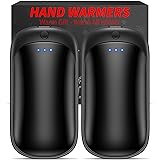Table of Contents
Analytics and Monitoring SEO Technique
Unmasking the veil of website performance in the digital realm requires both precision tools and keen observation. Analytics and Monitoring SEO stands as the sentinels in this quest to not just attract but captivate a targeted audience. The digital marketplace is dynamic, overflowing with content and competitors vying for visibility. It is through search engine optimization analytics that businesses can navigate these turbulent waters, gaining insights that lead to strategic positioning on Search Engine Results Pages (SERPs).
Embarking on an epic narrative of data-driven triumphs, website analytics for SEO becomes the storyteller, narrating the rise and fall of keyword rankings and the flux of web traffic. It isn’t simply about monitoring but understanding the pulse of digital interactions to enhance visibility. With the right SEO optimization monitoring methods, one can pivot with agility, making critical enhancements that resonate with both search algorithms and human curiosity.
And yet, the tale is incomplete without the rigor of SEO performance tracking. To measure is to know, and to know is to succeed. Businesses deploy sophisticated SEO tools to uncover the layers of user engagement – not just to see, but to comprehend the very essence of user satisfaction and search engine approval. In modern digital marketing, these practices spell the difference between obscurity and prominence.
Key Takeaways
- Employing SEO analytics paves the way for improved website visibility and user engagement.
- Effective SEO monitoring can reveal invaluable insights into organic traffic patterns and keyword efficacy.
- Meticulous tracking of SEO performance assists businesses in staying ahead of the competition.
- In-depth website analytics provide a roadmap for content and website optimization.
- Real-time SEO data analysis underpins strategic decision-making in digital marketing efforts.
- Fostering a synergy between search engine requirements and user preferences is key to online success.
The Indispensable Role of SEO Analytics in Enhancing Online Visibility
In today’s digital age, having a robust online presence is critical for businesses looking to succeed and thrive. One of the most effective tools at their disposal is search engine optimization (SEO), which when paired with detailed analytics, forms a powerful combination for increasing online traffic and improving a website’s search rankings. SEO data analysis is at the heart of understanding how users interact with your site, allowing you to fine-tune your approach and implement strategies that lead to significant SEO visibility improvement. Let’s delve into the intricate relationship between SEO analytics and a website’s success.
Understanding the Impact of SEO Analytics on Search Rankings
SEO analytics provides invaluable insights into how a website stacks up in Search Engine Results Pages (SERPs). With the aid of web analytics tools, businesses can identify which pages are performing well, which need improvement, and which keywords are driving the most traffic. Understanding these facets can lead to more focused content strategies and on-site optimizations, directly influencing rankings and organic traffic.
How SEO Analytics Influences User Experience and Engagement
A key aspect of SEO that often gets overlooked is the user experience. SEO analytics enable businesses to track user behavior, from time-on-page to bounce rates, offering a clear picture of engagement. By analyzing this data, companies can enhance the user experience by optimizing page layouts, improving navigation, and creating content that resonates with the audience’s preferences and needs.
Leveraging Search Engine Data to Inform Strategic Decisions
Behind every successful SEO strategy is a foundation of robust SEO reporting and analysis. SEO data isn’t just about rankings; it’s about understanding the ‘why’ and ‘how’ behind the numbers. This deep dive into data informs strategic decisions, from refining target keywords to restructuring a site’s information architecture. Through SEO analytics, businesses can make evidence-based decisions that propel them ahead of their competition, optimizing for the ever-evolving digital landscape.
In short, the synergy of SEO and analytics cannot be understated. Employing these practices leads to informed strategies that elevate a website’s relevance and authority, laying the groundwork for lasting online visibility and success.
Essential SEO Metrics That Matter for Website Health
When tracking the vitality of a website, several SEO metrics stand out as critical indicators of performance and user satisfaction. These metrics not only shed light on how effectively a site is achieving its search visibility goals but also offer a blueprint for informed decision-making and strategic tweaking. By consistently engaging in SEO performance monitoring and applying the insights derived from web analytics tools, webmasters can ensure their sites remain robust and responsive to the ever-evolving demands of online search.

One cornerstone of SEO monitoring is analyzing user engagement metrics. These figures reflect how real users interact with a website and can influence both structural changes and content development. Furthermore, regular search ranking analysis provides a clear window into the competition on the Search Engine Results Pages (SERPs), making it possible to fine-tune keyword strategies and stay ahead in the race for online visibility.
| SEO Metric | What It Tells Us | Why It’s Important |
|---|---|---|
| Click-Through Rate (CTR) | Percentage of users who click a search result to visit a site | Gauges title/meta description effectiveness and user interest |
| Bounce Rate | Percentage of visitors who leave after viewing only one page | Indicates engagement levels and potential content or UX issues |
| Time-on-Page | Average duration of a user’s visit to a specific page | Helps assess content resonance and relevance to user queries |
| Organic Keyword Rankings | Positions of webpages in SERP for targeted keywords | Allows assessment of SEO strategies against competitors |
Notably, technical SEO issues are commonly uncovered during these evaluation processes, underscoring the necessity for ongoing scrutiny. For instance, a site audit might reveal broken links or missing meta tags, which can negatively impact both user experience and search engine rankings. Fast identification and resolution of such problems are therefore paramount.
Ultimately, these SEO health metrics enable webmasters to hone their websites into finely-tuned platforms for both user satisfaction and high SERP positioning. Through dedicated tracking and analysis, maintaining and improving website health becomes a dynamic and exceedingly effective process.
Analytics and Monitoring SEO: The Core Components
In the world of digital marketing, the intricate dance between website analytics and SEO optimization cannot be understated. The two go hand-in-hand, crafting a pathway for websites to shine in the competitive online space. By diligently monitoring SEO progress and engaging in meticulous SEO analysis, webmasters and marketers can fine-tune their strategies, ensuring that organic search tracking and website analytics translate into tangible success.
The Intersection of Website Analytics and SEO Success
Understanding user behavior, traffic sources, and engagement levels through website analytics is paramount for crafting an SEO strategy that resonates with target audiences. Analytics provides the necessary insights to elevate a website’s search engine rankings, and ultimately, to enhance the user experience. This ensures that every adjustment to the SEO strategy is data-driven and aligned with the overarching goal of boosting online visibility and engagement.

Continuous Monitoring: A Necessity for SEO Progress
Staying ahead in SEO requires a proactive approach. Regular monitoring of SEO campaigns empowers marketers to respond promptly to the latest search engine algorithm updates and emerging market trends. Tools like Semrush have become invaluable assets to the modern SEO professional, offering features such as daily rank tracking, comprehensive SERP analysis, and insightful competitor comparisons—all essential for maintaining a clear view of the trajectory of SEO efforts and facilitating swift strategy optimization.
- Daily rank tracking to keep tabs on keyword performance
- SERP analysis for identifying top pages and content opportunities
- Competitor comparison to benchmark and outperform industry rivals
- User behavior monitoring to tailor content effectively
- Traffic source insights that inform channel optimization
By harnessing the full potential of SEO analytics tools, businesses can navigate the complexity of SEO with confidence, translating data into actionable strategies that lead the way to improved website performance and a stronger online presence.
The Power of Real-Time SEO Monitoring for Immediate Insights
In the fast-paced world of digital marketing, keeping abreast of the latest SEO movements is not just a necessity; it’s a competitive edge. Harnessing SEO real-time monitoring empowers businesses with the ability to detect and respond to changes quickly, mitigating risks and capitalizing on opportunities as they arise. Such agility in an SEO campaign analysis is what separates the market leaders from the followers.

Alerts and Notifications: Keeping a Pulse on Your SEO Campaign
To maintain a streamlined SEO process, implementing a system of SEO alerts and notifications is essential. It keeps your team proactive rather than reactive, allowing them to address any critical issues like ranking drops or traffic deviations in real time. A well-set alert system serves as your digital lookout, constantly bearing witness to the health of your online presence.
Identifying and Reacting to SEO Shifts and Trends Instantly
With the relentless evolution of search engine algorithms and online consumer behavior, an effective SEO strategy hinges on the ability to identify and act upon emerging SEO shifts and trends quickly. Staying atop SEO rank monitoring not only informs you when a page improves or declines in ranking position but also provides insights into broader market movements and competitor strategies.
| SEO Monitoring Features | Benefits | Tools for Implementation |
|---|---|---|
| Real-time Keyword Tracking | Immediate visibility into keyword performance | Google Analytics, Ahrefs |
| Traffic Drop Alerts | Fast response to potential content or technical issues | Moz Pro, SEMrush |
| Competitor Rank Monitoring | Insights into competitor SEO strategies | SpyFu, Serpstat |
| SEO Trend Analysis | Ability to forecast and take advantage of search trends | Google Trends, BuzzSumo |
Staying on the pulse of your website’s SEO dynamics with SEO trend analysis grants you the foresight to refine strategies, ensure content relevance, and deliver what your audience seeks—effectively keeping your brand in the vanguard of search results.
Optimizing Your Website’s SEO Performance Through Structured Data Analysis
As a business, you must turn to structured data analysis to fully leverage SEO data visualization and SEO data analysis for optimizing your website’s visibility and user engagement. This crucial analytical process allows for a deeper understanding of website performance analytics, delivering insights that are critical for data-driven decisions.
Employing SEO analytics software aids in sifting through and making sense of extensive SEO data. By effectively uncovering patterns and anomalies within the data, businesses can articulate stronger SEO optimization strategies. Moreover, utilizing tools for SEO performance analysis ensures that SEO efforts are not only accurately measured but also enhanced.

Data visualization stands out as a transformative component in interpreting complex SEO metrics. The visual representation of data promotes comprehensibility and allows trends to surface, which may have otherwise gone unnoticed. The table below illustrates how visualization assists in comparing various metrics for effective website performance analytics.
| SEO Metric | Before Visualization | After Visualization |
|---|---|---|
| Keyword Rankings | Numerical Data | Graphs showing ranking over time |
| Backlink Quality | Raw Count | Chart categorizing backlinks |
| Organic Traffic | Monthly Visit Numbers | Trend lines indicating peaks and dips |
| User Behavior | Statistics like bounce rate, session duration | Heat maps revealing user interaction |
An analytical approach to SEO, rooted in structured data analysis, allows businesses not just to respond to the current state of their website’s performance, but also to anticipate future changes. By focusing on the areas most likely to yield improvements in search rankings and user experience, companies are well-equipped to stay ahead in the digital landscape.
In essence, sophisticated SEO data visualization and thorough SEO performance analysis form the backbone of any robust SEO strategy, ensuring constant refinement and optimization in alignment with the very dynamics of search behavior and algorithm updates.
Advanced SEO Monitoring Tools for Comprehensive Analysis
The landscape of digital marketing is ever-evolving, and staying ahead requires a robust set of SEO analytics tools. For businesses aiming to fine-tune their online presence, the choice of SEO monitoring software can make or break their ability to gather actionable SEO reporting and insights. Advanced platforms offer a wealth of data to drive strategic decision-making and improve SEO performance.
Comparing Leading SEO Analytics Platforms
Choosing the right platform often begins with a direct comparison of the leading SEO analytics platforms. Features such as ease of use, data accuracy, and depth of analysis are all factors to consider. Let’s delve into a side-by-side comparison looking at some of the key attributes of each:
| Feature | Google Analytics | Semrush | Ahrefs | Moz Pro |
|---|---|---|---|---|
| Keyword Tracking | Comprehensive | Daily Updates | Extensive Database | Keyword Explorer |
| Site Audit | Limited | Site Health | Technical SEO Auditing | On-Demand Crawl |
| Competitive Analysis | Basic | In-depth Competitor Metrics | Competitive Domain Comparison | Competitor Keyword Tracking |
| Reporting & Insights | Custom Reports | White-Label Reporting | SEO Performance Dashboard | Custom Report Builder |
| User Experience | Intuitive | User-Friendly Interface | Intuitive Platform | Clean Interface |
Integration and Automation in SEO Monitoring Software
Efficiency is key in SEO monitoring. Integration of various tools and automation of repetitive tasks not only save valuable time but also ensure consistency in data collection and analysis. Platforms that offer these capabilities support a more streamlined, productive SEO workflow, enabling real-time monitoring and quick response to changes.
Personalizing Your SEO Dashboard for Effective Tracking
A personalized dashboard brings the most relevant SEO metrics to the forefront. By customizing your user experience around the specific goals and metrics that matter most to your business, you empower your team with the focus needed for impactful SEO tracking and management.
The selection and utilization of SEO monitoring tools are not just about data. It’s about transforming that data into strategic SEO insight — the kind that informs decisions and drives digital marketing success.
Pivotal SEO Reporting Features for Measurable Results
SEO reporting stands as the backbone of successful search engine optimization strategies, offering a lens through which marketers can evaluate the efficacy of their efforts. At the heart of SEO reporting and insights are key features designed to turn raw search engine analytics into actionable strategies that can profoundly impact a website’s visibility online.
For companies to harness the full potential of their SEO tracking endeavors, they must rely on in-depth keyword analysis, quantify the growth in organic traffic, and track conversion rates meticulously. Here, we delve into essential reporting features that enable businesses to measure SEO success with precision.
| SEO Reporting Feature | Benefits |
|---|---|
| Keyword Performance Tracking | Allows identification of high-performing keywords, aids in optimizing content strategy |
| Competitor Benchmarking | Provides insights into competitor strategies, highlighting opportunities for enhancement |
| Traffic Analysis | Sheds light on user acquisition channels and behaviors, offering data to improve user engagement |
| Conversion Tracking | Measures the effectiveness of SEO in driving desired user actions, aligning with business goals |
These features serve not just as a navigational compass but also as a mirror, reflecting a campaign’s strengths and areas for improvement. Empowered with these insights, marketers and SEO professionals are better positioned to refine their SEO processes and strategies, ensuring that every step taken is in the direction of measurable and impactful results.
User-First SEO: Adapting Strategies Based on Audience Behavior Analysis
Embracing a user-first approach to SEO entails a deep dive into user engagement metrics and behavior analysis. By scrutinizing how users interact with content, businesses can meticulously refine SEO strategies, ensuring they resonate with the target audience’s preferences and behaviors. Let’s delve into the pivotal elements of adapting SEO strategies grounded in user engagement and behavior analysis.
Utilizing User Engagement Metrics for SEO Fine-tuning
User engagement metrics serve as a compass for SEO practitioners, pointing them toward areas ripe for improvement. A thorough look at indicators such as time on site, pages per session, and bounce rate can reveal intricate details about user satisfaction and content effectiveness. This detailed analysis supports ongoing SEO performance tracking and optimization efforts for enhanced SEO visibility.
Content Adaptation: Responding to User Preferences and Feedback
The insights from user behavior analysis also guide the evolution of content strategy. It becomes imperative for businesses to adapt their content to align with what users find engaging and relevant. Whether it’s tweaking headlines, reorienting keyword strategies, or refining meta descriptions, every effort is made to cater to the ever-changing user preferences and improve SEO visibility in the digital marketplace.
| Engagement Metric | Insight for SEO | Actionable Steps |
|---|---|---|
| Bounce Rate | Indicates user’s first impression | Improve landing page content and design |
| Pages per Session | Shows depth of user interest | Enhance internal linking and content value |
| Time on Site | Reflects content resonance | Develop more engaging and interactive content |
| Conversion Rate | Measures effectiveness of CTA | Optimize CTA placement and messaging |
By refocusing on the needs of the user through user engagement metrics, keyword performance tracking, and comprehensive user behavior analysis, one can ensure that their website not only reaches its peak SEO performance but also provides a gratifying user experience, thereby achieving substantial SEO visibility improvement.
Understanding the Technical SEO Landscape Through Monitoring
Maintaining a robust online presence demands vigilance over the technical elements of SEO. Comprehensive website performance monitoring and routine SEO health auditing can highlight technical SEO issues that may prevent a website from achieving its full potential.
Addressing and Amending Technical SEO Roadblocks
Technical hindrances can derail even the most refined SEO strategies. Common problems like page load delays, faulty redirections, and HTTPS implementation issues must be swiftly addressed. These obstacles not only affect user experience but also how search engines assess and rank your site. Businesses can use SEO tools to scan for and fix these issues, ensuring that search engine optimization monitoring leads to meaningful improvements in site functionality and search result standings.
Auditing Your Site’s SEO Health for Superior Performance
SEO health audits act as a comprehensive check-up for your website, identifying areas that require attention. By examining aspects such as crawlability, indexation, and site architecture, businesses can implement corrective actions that pave the way for smooth navigability and enhanced visibility. Tools like Semrush and Google Search Console provide deep insights into the website’s standing from a technical standpoint, empowering businesses to make informed, proactive changes.
As we delve into the ecosystem of search engine optimization monitoring, it becomes evident that continuous scrutiny and refinement are non-negotiable for sustaining an impeccable online presence. Audits and analyses allow for the anticipation of potential setbacks and the deployment of well-timed solutions. In the ever-evolving landscape of the internet, technical SEO remains an integral component of a successful digital strategy.
SEO Monitoring Case Studies: Success Stories and Lessons Learned
Analyzing SEO monitoring case studies offers invaluable insights into the efficacy of SEO strategy optimization and reveals why certain campaigns evolve into SEO success stories. Real-world applications and tactical shifts, grounded in solid SEO monitoring techniques, demystify the process of turning data into actionable results. These narratives not only inspire but also serve as instructional blueprints for replicating success. Below, we explore the elements that contributed to significant SEO advancements and underscore the power of meticulous SEO campaign analysis.
| Case Study | Initial Challenge | SEO Strategy Applied | Outcome |
|---|---|---|---|
| Edelweiss Bakery | Low mobile organic traffic | Mobile optimization, Local SEO | 460% increase in traffic |
| EcoWear Clothing | Poor keyword rankings | Keyword optimization, Quality content creation | Ranked in the top 10 for targeted keywords |
| Bookland Online Store | High bounce rate | Improved user interface, Enhanced user experience | 30% decrease in bounce rate |
| Gizmo Gadgets | Ineffective backlink strategy | Authentic link building, Influencer partnerships | Improved SERP positioning and domain authority |
Each case underscored the importance of SEO adaptability. Edelweiss Bakery’s focus on mobile users and local SEO proved revolutionary, resulting in a dramatic uptick in engagement. Likewise, EcoWear Clothing’s meticulous keyword research and quality content delivered a competitive edge in the rankings. Bookland Online Store’s investment in user experience transformed site metrics and customer retention, while Gizmo Gadgets leveraged relationships for powerful backlinks. These vignettes epitomize the transformative potential inherent in a well-crafted SEO strategy, reaffirming the axiom that with the right SEO monitoring, optimization is not just possible—it’s probable.
Conclusion
In the intricate tapestry of search engine optimization, the threads of analytics and monitoring are not merely ancillary; they are the warp and weft that give form to the fabric of SEO success. As we’ve explored, the use of these tools to gain insight into online visibility enhancement is nothing short of indispensable, for they provide the strategic vantage from which webmasters can adapt campaigns with finesse and precision. Incremental gains in SEO analytics achievements are, after all, the stepping stones to reaching the zenith of search rankings.
For a deeper dive into the multifaceted world of SEO, our comprehensive post on easy SEO techniques serves as a foundational guide. To further bolster your website’s health, explore our insights on technical SEO essentials. Enhance your on-page strategies with our article on on-page SEO best practices, and understand the impact of backlinks on SEO performance to optimize your site’s authority and relevance. Additionally, our piece on content creation and SEO techniques offers valuable advice for crafting content that resonates with both search engines and audiences. Lastly, don’t overlook the crucial interplay between user experience and SEO, where we focus on seven key factors to enhance user engagement and site performance.
By placing user experience at the core of SEO optimization efforts, businesses anchor their strategies in the kind of user-first practices that engender not only higher engagement rates but also a more loyal user base. This symbiotic relationship between user satisfaction and SEO performance denotes a landscape where both the visitor and the visited reap rich rewards from high-quality, well-optimized content. And within this realm, the stories of SEO monitoring success not only inspire but also illuminate the pathway for others to follow.
Therefore, as we encapsulate the collective wisdom gleaned from this exploration, it becomes clear that the integration of robust analytics with proactive SEO monitoring is the cornerstone of digital growth. These practices empower businesses to thrive amidst the dynamic currents of the digital ecosystem and carve out spaces where their online presence resonates strongly and effectively. In essence, the meticulous melding of analytical insight with SEO endeavors is the beacon that guides websites toward greater visibility, traffic, and, ultimately, a formidable online prowess.
FAQ
What is the role of analytics and monitoring in SEO?
Analytics and monitoring in SEO are essential for understanding a website’s performance in search engine results pages (SERPs) and for enhancing its visibility online. By tracking SEO metrics and user engagement, website owners can make informed decisions to optimize their content and structure for better rankings and traffic.
How do SEO analytics impact search rankings?
SEO analytics provide insight into which keywords and content strategies are most effective at driving organic traffic. By analyzing this data, businesses can focus on high-performing keywords and optimize their pages, which can improve their rankings in search results.
Why are user engagement metrics important for SEO?
User engagement metrics, such as time-on-page, bounce rate, and click-through rate, offer insights into how visitors interact with a website. These metrics help businesses understand user behavior and preferences, which can inform content strategy and enhance user experience, ultimately contributing to better SEO performance.
What are the core components of SEO analytics and monitoring?
The core components include tracking organic search traffic, keyword rankings, backlink profiles, on-page optimization, and user engagement. Integrating website analytics with SEO practices helps in understanding the success of SEO campaigns and guides strategy optimization.
How can real-time SEO monitoring provide immediate insights?
Real-time SEO monitoring delivers instant data on a website’s SEO performance, including keyword ranking changes, traffic fluctuations, and competitor actions. This immediate insight allows businesses to act quickly, addressing any issues and seizing opportunities as they arise.
Why is structured data analysis vital for SEO performance?
Structured data analysis helps to organize and interpret complex SEO data, making it easier to detect patterns and trends that can guide strategic decisions. It enables the precise measurement of SEO campaigns, leading to more effective optimization efforts.
What features should be considered when comparing SEO analytics platforms?
When comparing SEO analytics platforms, consider features like rank tracking, site audit capabilities, backlink analysis, integration options, automation features, and the quality of reporting and data visualization tools. User interface and ease of use are also important considerations.
How does integration and automation enhance SEO monitoring software?
Integration and automation streamline the SEO monitoring process, reducing manual effort and ensuring timely execution of analysis and reporting. It enables the creation of workflows that can alert users to critical changes, keeping SEO strategies adaptive and proactive.
What are pivotal SEO reporting features for measurable results?
Essential SEO reporting features include detailed keyword tracking, traffic analysis, conversion tracking, competitive benchmarking, and trend graphs. Such features facilitate the assessment of SEO performance and the translation of data into actionable insights.
How can SEO strategies be adapted based on audience behavior analysis?
Utilizing audience behavior analysis through user engagement metrics allows businesses to refine their SEO strategies, catering to the preferences and patterns of their audience. This may involve adjustments to content, website structure, and user pathways to improve the user experience and SEO outcomes.
What are common technical SEO roadblocks and how can they be addressed?
Common technical SEO roadblocks include slow page load times, crawl errors, mobile usability issues, and broken links. Addressing these issues involves regular site audits, implementing best practices for website performance, and making continuous improvements to adhere to search engine guidelines.
Why is auditing your site’s SEO health important?
Auditing your site’s SEO health is important to identify and fix problems that may be hurting your search engine ranking. Regular audits allow you to ensure that your website meets the latest SEO standards and provides a good user experience, which are both crucial for maintaining and improving organic search performance.
Can you provide examples of SEO monitoring case studies or success stories?
While specific case studies will vary, successful SEO monitoring often includes scenarios where businesses have significantly increased their traffic, improved their keyword rankings, or boosted their conversions after making data-driven adjustments based on their SEO analytics and monitoring efforts.
Source Links
- https://aicontentfy.com/en/blog/importance-of-seo-analytics-how-data-analysis-can-boost-websites-visibility
- https://www.semrush.com/blog/seo-monitoring/
- https://www.webfx.com/seo/learn/seo-monitoring/





